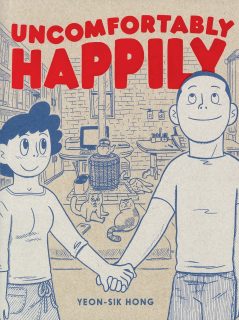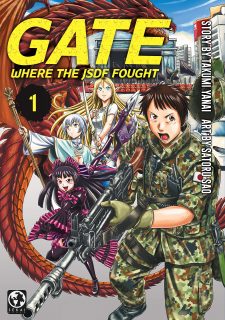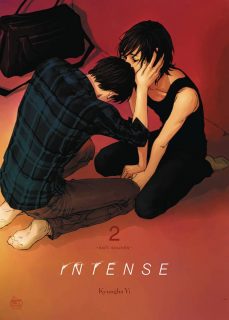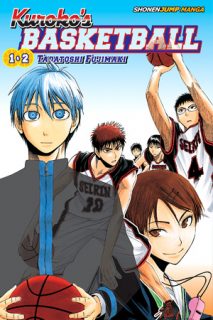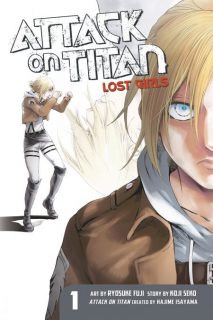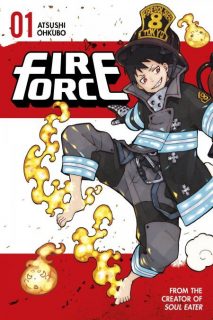My News and Reviews
Last week was a very quiet one here at Experiments in Manga with nothing posted other than the usual My Week in Manga feature. However, I did manage to make some progress with my next in-depth review, so that should (hopefully!) be posted later this week. While not much was happening here at the blog, the North American manga publishers were all keeping pretty busy last week with a variety of license announcements, made either online or while at Anime NYC.
Starting with the online licensing spree from Seven Seas: The Bride & the Exorcist Knight manga by Keiko Ishihara; The Bride Was a Boy manga by Chii (an autobio comic by a transwoman–I’ll definitely be picking this up!); the Claudine manga by Riyoko Ikeda (I am absolutely thrilled by this license); teh Fairy Tale Battle Royale manga by Soraho Ina; the Harukana Receive manga by Nyoijizai; the How a Realist Hero Rebuilt the Kingdom light novels by Dojyomaru and Fuyuyuki (previously released digitally by J-Novel Club); the My Solo Exchange Diary manga by Nagata Kabi (a follow-up to My Lesbian Experience with Loneliness); the Ojojojo manga by coolkyousinnjya; the Plus-Sized Elf manga by Synecdoche; the Space Battleship Yamato manga by Leiji Matsumoto (I’m so happy more influential classic manga is being translated); the True Tenchi Muyo! light novels is written by Masaki Kajishima and Yousuke Kuroda; the Versailles of the Dead manga by Kumiko Suekane; and the Wonderland manga by Yugo Ishikawa.
At Anime NYC, Kodansha Comics announced that it would be releasing Yasushi Baba’s Golosseum manga and Vertical Comics revealed that it would be publishing Tsutomu Nihei’s Aposimz. As for Viz Media, the publisher announced that it would be releasing a print edition of Hideyuki Furuhashi and Betten Court’s My Hero Academia: Vigilantes manga (currently being released digitally) in addition to a brand new license, Okura and Coma Hashii’s That Blue Sky Feeling manga (I’m really looking forward to this one).
Yen Press has picked up quite a few things as well: Sanzo’s Caterpillar Girl and Bad Texter Boy manga; Tsukikage and Bob’s Defeating the Demon Lord’s a Cinch (If You Have a Ringer) light novels; Kazushige Nojima’s Final Fantasy VII short story collection; Natsuki Takaya’s Fruits Basket Another manga; Yoh Yoshinari’s Little Witch Academia manga; Hiroumi Aoi’s Shibuya Goldfish manga; Yusaku Komiyama’s Star Wars: Lost Stars manga; Gao Yuzuki’s The Strange Creature at Kuroyuri Apartments manga; Keiichi Sigsawa’s Sword Art Online: Alternative Gun Gale Online light novels; Soichiro Yamamoto’s Teasing Master Takagi-san manga; Mito Aoi’s Tsuno no Gakuen manga; and Akira Kareno’s WorldEnd light novels.
Quick Takes
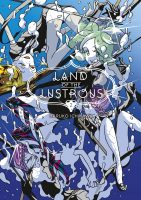 Land of the Lustrous, Volumes 2-3 by Haruko Ichikawa. I found the first volume of Land of the Lustrous to be pretty, but perplexing; Ichikawa’s artwork can be absolutely stunning even while the plot remains somewhat impenetrable. Even so, I was and remain intrigued by Land of the Lustrous and its peculiar charm. The second and third volumes continue to explore the world that Ichikawa has created. Largely following Phos, who has been charged with writing a natural history (providing an excellent excuse to show readers around), more is slowly revealed about the Lustrous, the Lunarians with whom they battle, and the larger environment in which they live. The manga still seems to be primarily concerned about finding opportunities to display exquisite visuals–and there are certainly plenty of those–but the series’ underlying symbolism, themes, and mythologies are starting to coalesce and crystallize as well. Land of the Lustrous can be surprisingly philosophical even while being strange and surreal. I may not always understand exactly what’s going on, but I am captivated by the manga’s allure.
Land of the Lustrous, Volumes 2-3 by Haruko Ichikawa. I found the first volume of Land of the Lustrous to be pretty, but perplexing; Ichikawa’s artwork can be absolutely stunning even while the plot remains somewhat impenetrable. Even so, I was and remain intrigued by Land of the Lustrous and its peculiar charm. The second and third volumes continue to explore the world that Ichikawa has created. Largely following Phos, who has been charged with writing a natural history (providing an excellent excuse to show readers around), more is slowly revealed about the Lustrous, the Lunarians with whom they battle, and the larger environment in which they live. The manga still seems to be primarily concerned about finding opportunities to display exquisite visuals–and there are certainly plenty of those–but the series’ underlying symbolism, themes, and mythologies are starting to coalesce and crystallize as well. Land of the Lustrous can be surprisingly philosophical even while being strange and surreal. I may not always understand exactly what’s going on, but I am captivated by the manga’s allure.
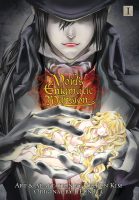 Void’s Enigmatic Mansion, Volumes 1-2 by HeeEun Kim. It seems as though there are fewer manhwa being translated into English these days, but Yen Press still publishes some. The fifth and final volume of Void’s Enigmatic Mansion was released earlier this year which made me realize that I hadn’t actually gotten around to reading any of the series yet. JiEun Ha is credited as the creator of the original, but I haven’t been able to determine if that means there’s another version of the story out there in a different medium or if Ha simply developed the basic manhwa’s premise. In either case, Kim is the series’ adapter and artist. The titular mansion is a seven-story building, most of which the owner rents out. The mysterious Mr. Void hasn’t been seen yet (as far as readers know), but a number of his tenants have, none of whom live particularly happy lives. Void’s Enigmatic Mansion tends to be fairly episodic although there are also threads tying all of the characters and their unsettling stories together. Kim’s full-color illustrations can be quite beautiful, but they are also punctuated by shocking moments of blood and gore befitting the series’ horror.
Void’s Enigmatic Mansion, Volumes 1-2 by HeeEun Kim. It seems as though there are fewer manhwa being translated into English these days, but Yen Press still publishes some. The fifth and final volume of Void’s Enigmatic Mansion was released earlier this year which made me realize that I hadn’t actually gotten around to reading any of the series yet. JiEun Ha is credited as the creator of the original, but I haven’t been able to determine if that means there’s another version of the story out there in a different medium or if Ha simply developed the basic manhwa’s premise. In either case, Kim is the series’ adapter and artist. The titular mansion is a seven-story building, most of which the owner rents out. The mysterious Mr. Void hasn’t been seen yet (as far as readers know), but a number of his tenants have, none of whom live particularly happy lives. Void’s Enigmatic Mansion tends to be fairly episodic although there are also threads tying all of the characters and their unsettling stories together. Kim’s full-color illustrations can be quite beautiful, but they are also punctuated by shocking moments of blood and gore befitting the series’ horror.

